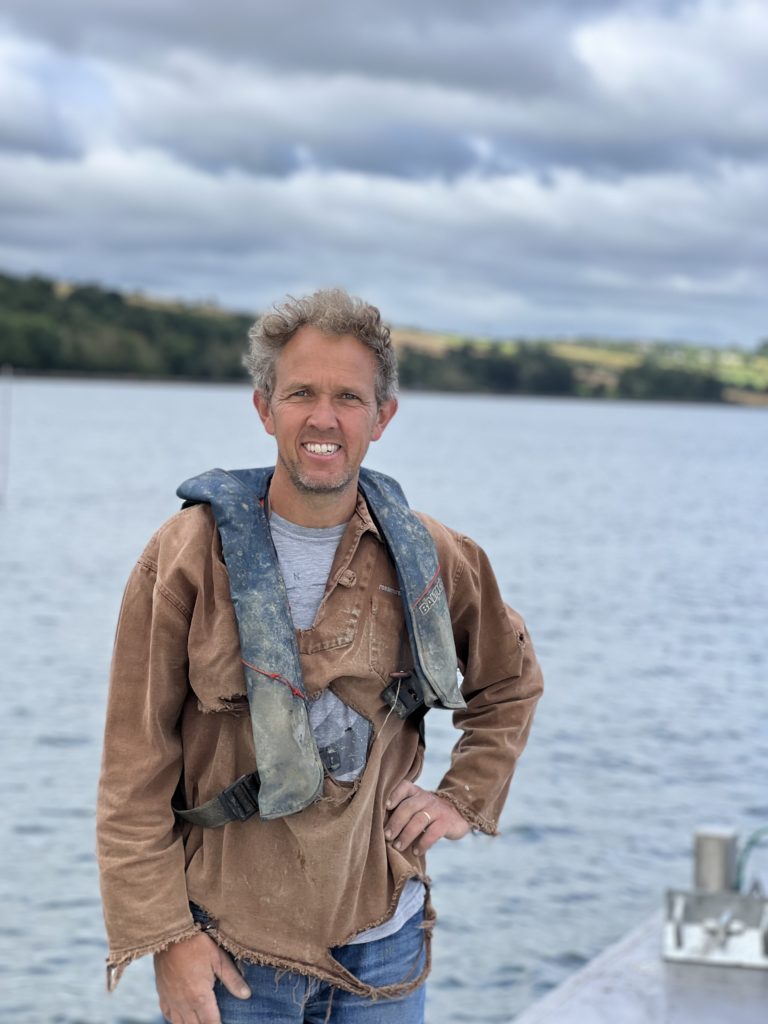Stranraer Oyster Festival returns this September to celebrate the town’s native oyster heritage, it also plays hosts to the Scottish Oyster Shucking Championship and someone who will be entering is Tristan Hugh-Jones from The Loch Ryan Oyster Fishery Company.
The historic Loch Ryan Oyster Beds date from 1701 when King William III granted the Wallace family a Royal Charter to harvest oysters. Oysters have been farmed ever since, with a series of different people working them.
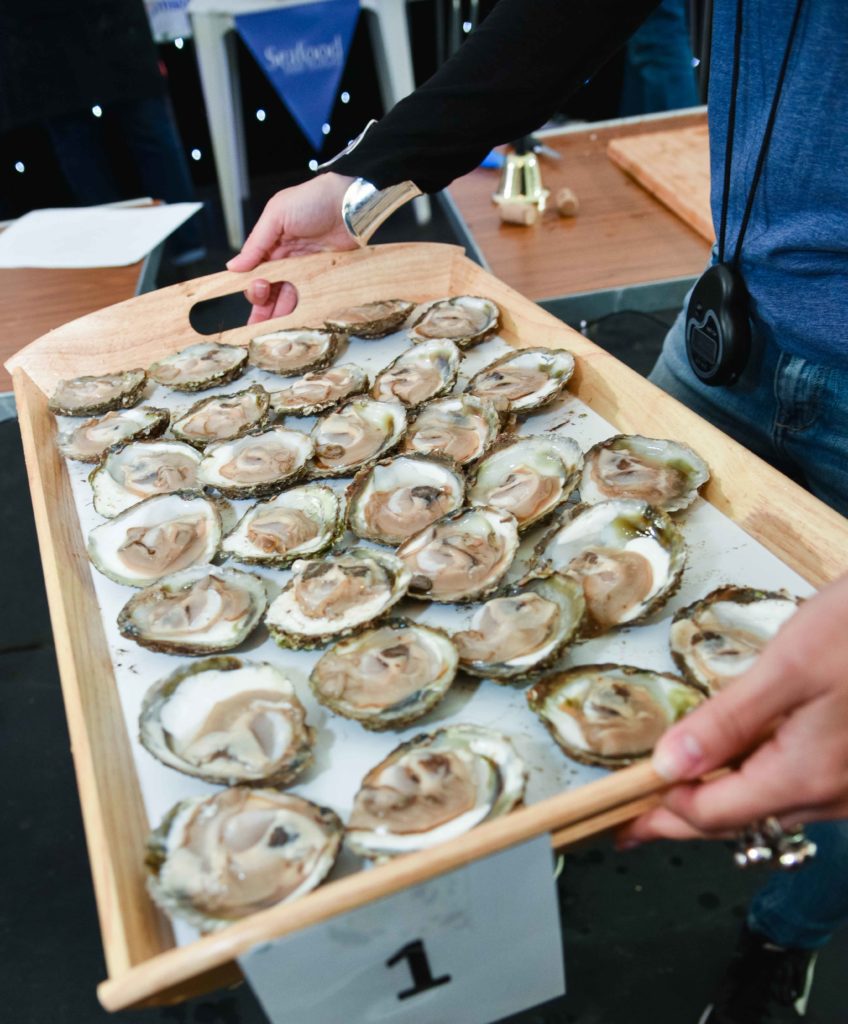
Tristan’s parents initially began farming at Rossmore Oysters in Ireland in 1969 but were asked to take over the running of the Loch Ryan beds in 1996, as the beds had fallen into decline.
So his childhood was spent mucking about in the water on an estuary in Southern Ireland and it is no surprise that oysters ended up being his career; he recalls aged seven, steering a boat while standing on a milk crate to see out of the window.
After school he studied Geography and Geology at Bristol University, where oysters even seeped into his studies.
His dissertation analysed mud samples from a Cornish oyster bed, where a historic mining disaster caused heavy metals to be released into the sea.
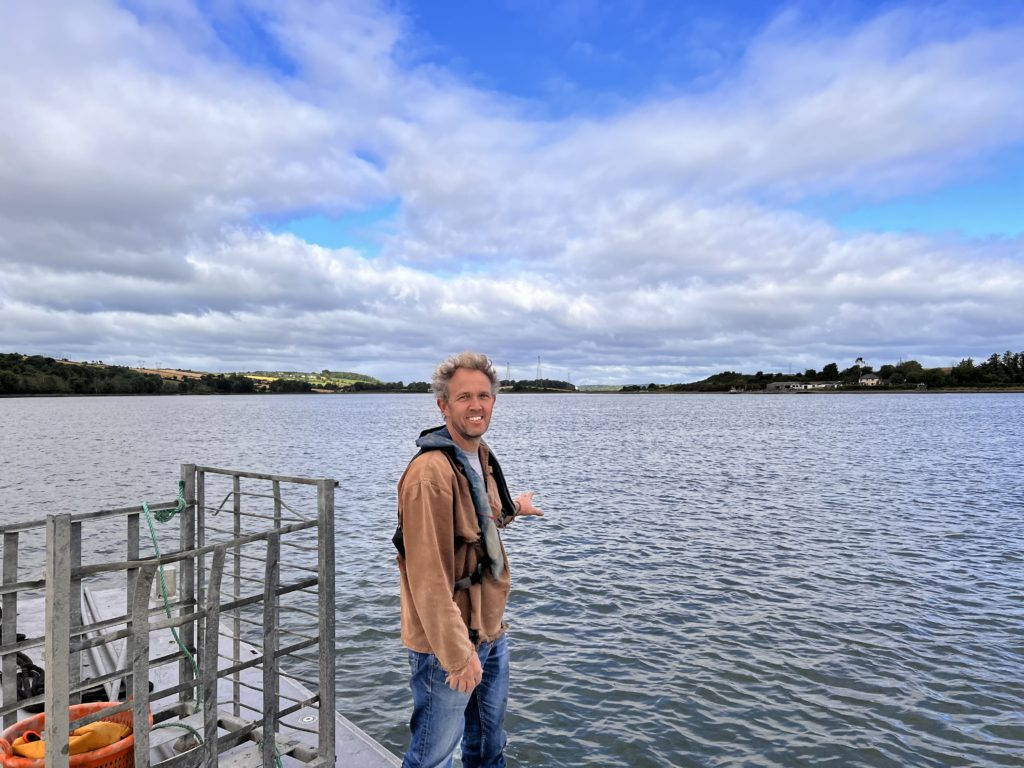
He then went to Indonesia rainforest with friends on a wild adventure to an island called Halmahera, home to 23 different species of birds of paradise, as part of an conservation expedition surveying birds.
He explains his role was to identify how much of the nature reserve was of a particular type of habitat.
Then he travelled to Indonesia, Singapore, Malaysia, Thailand and China, and spent time in Hong Kong, where his father air-freighted a box of oysters from back home and asked him to find him new customers.
He succeeded and they have since supplied a tonne of oysters there weekly.
Tristan is not the only adventurer in his family, Vicky, his wife, has walked to the South Pole, and ran the Marathon des Sables across the Sahara; "I can't keep up with her at all," he says.
Their children are also thankfully oysters fans and have helped out at festivals.
He always planned to become involved in the family business after travelling and he was given the task of looking after the last remaining native oyster bed in Scotland.
The U-shaped geography of Loch Ryan means that the water doesn't rush in and out, instead, he says:, "It fills up a bit like a puddle and then hangs around. That is the reason the oysters like it there as the larvae can breed in the summer and will happily stay in the loch."
Today there is a minimal harvest of 10 or 20 tonnes, but Tristan is hopeful that this year's hot summer will result in a bumper harvest.

Tristan tells me although his family have been looking after the bed for 28 years they are always looking towards the future, supporting a lot of oyster restoration projects.
Loch Ryan is one of the very few places with a good stock of strong old native oysters to help restock beds in Wales, on the Solent and Germany and N Ireland.
He says, "It is exciting because those oysters are going to survive and live and breed, whereas the ones we are selling to London are going to be eaten but sending live oysters from Scotland to Northern Ireland to be released involves paperwork like you have never seen before."
"Before Brexit I would happily just put oysters onto a lorry with email approval from Marine Scotland."
Now he has to send a request to Marine Scotland, who then issues a health certificate, before a vet can travel to the oyster farm, inspect them then fill in a seven page document.
He says: "The whole thing is just a bit of a joke and it is a huge expense and the certificate only lasts 72 hours."
It is important that they are continually working the oyster bed even if they are not harvesting. It loosens up and cleans the shell on the bottom of the loch, which is important for catching the larvae who attach themselves to shells to grow.
Tristan explains, "It's a waiting game,"
In charge of the laying-back process and harvesting are locals, Rob Lamont and John Mills who dredge using the 1970s Clyde built trawler called the 'Vital Spark'
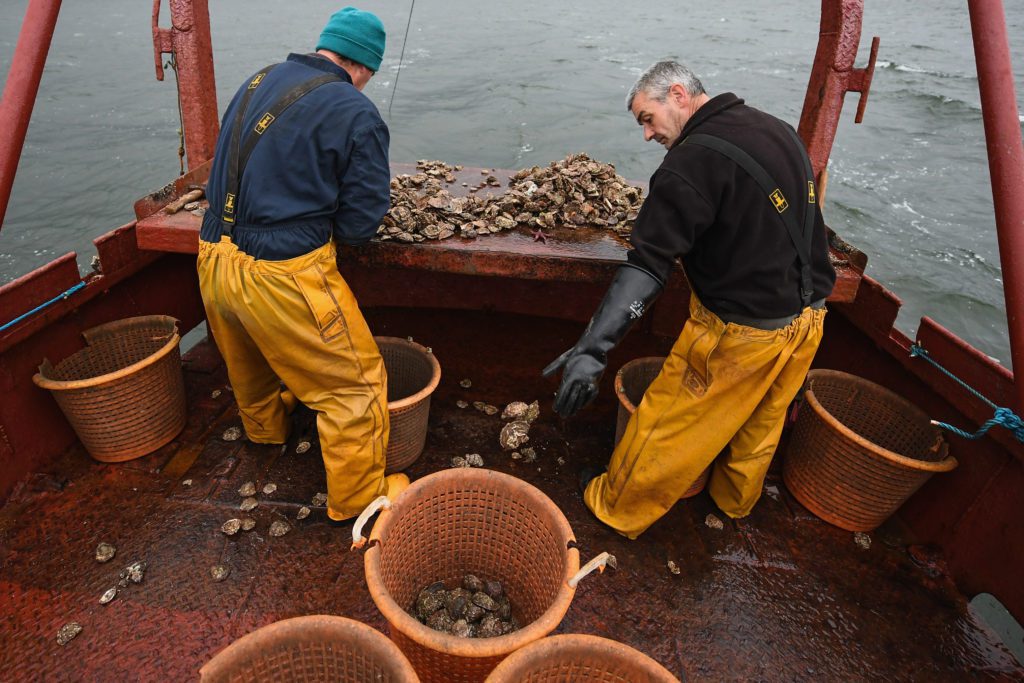
Loch Ryan has native disease free stock, and it takes 10 years for a baby spat to grow to the harvesting size of 100g.
The oysters are harvested from from September until roughly the end of April, but It is absolutely imperative they do not fish the whole time, avoiding the summer months when they breed.
"The main thing we are worried about is the water temperatures. Ideally we need a nice slow increase in the water temperature up to a point where they can breed and then it can dwindle away and get cooler again. If it starts to get warm and suddenly goes cold, the oyster doesn't quite know whether to spawn or not."
Native oysters don't breed much further north than Loch Ryan, he said; "It is a bit touch and go at the best of times."
So they constantly record the temperature in the loch to derive a feel for what is happening under the water surface.
They work with Heriot-Watt University students, who research spat falls and when spawning happens in the loch, to gather valuable data.
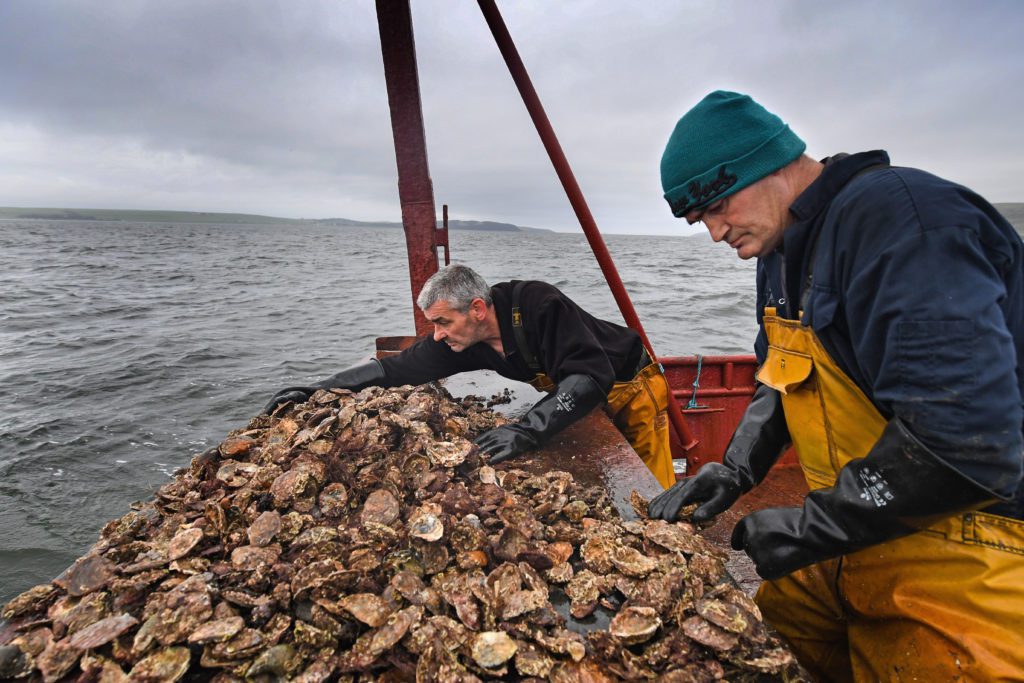
Tristan explains what happens after the oysters have been harvested. "They are only out of the water for a short time before being hand graded. They are then brought ashore to be machine graded again before being packed in net bags and transported down south."
Before gracing the finest tables in London they spend time in holding tanks in Sussex where they will be regraded, cleaned and purified for 42 hours.
This means they can arrive at restaurants and hotels in the freshest condition, although some are sold locally, at Henrys Bay House in Stranraer
The holding tanks are filled with artificial seawater and can hold up to 50 000 oysters which means they can be kept alive happily until they need to be sold.
Prior to this Loch Ryan oysters were sold at a lower price but now they can sell them at the highest price and they will always be able to supply demand at peak times like Valentine's day.
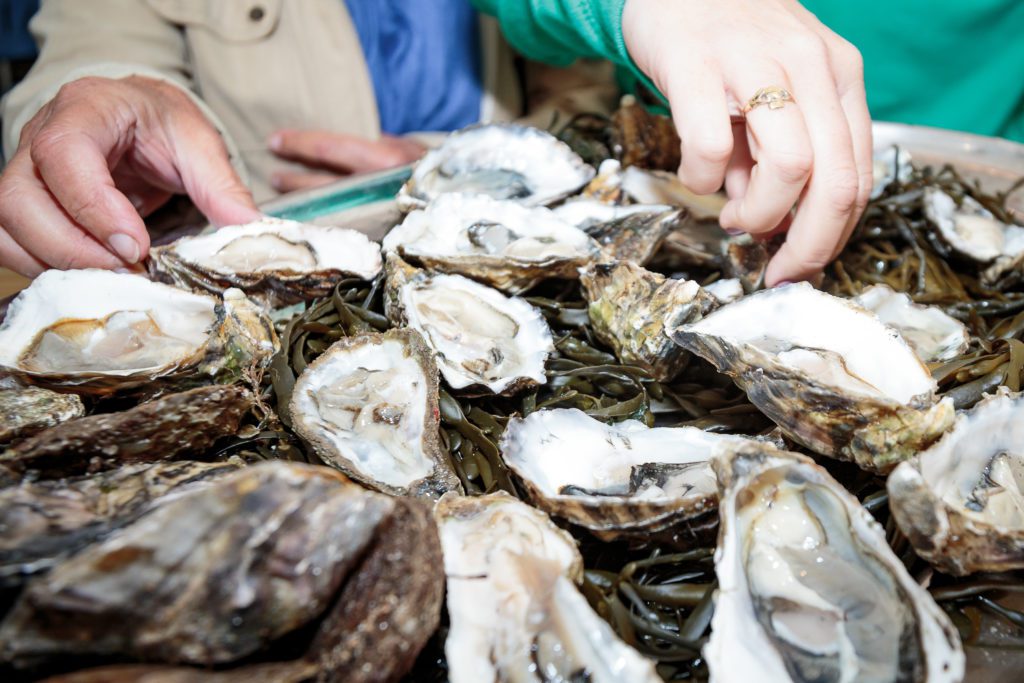
The high class molluscs are then chauffeur driven in a van to places like, Scott's in Mayfair, Sheekey's, The Wolseley, Wiltons and The Ritz in Central London.
Tristan tells me, Loch Ryan native oysters are very slow growing, only 10 grams a year, whereas the ones in Ireland grow about 30g a year.
The Oyster Festival in Stranraer was set up to attract tourists with the help of the Stranraer development trust and Tristan says: “It is brilliant."
Romano Petrucci, Chair of Stranraer Development Trust was excited when he learned of this huge asset right on the doorstep, Loch Ryan is one of the last remaining oyster beds in Europe.
Tristan explains he is delighted the festival will return this year. "There is a riotous lovely party in the evening, with lots of food traders, a bar and music and an Oyster ball."
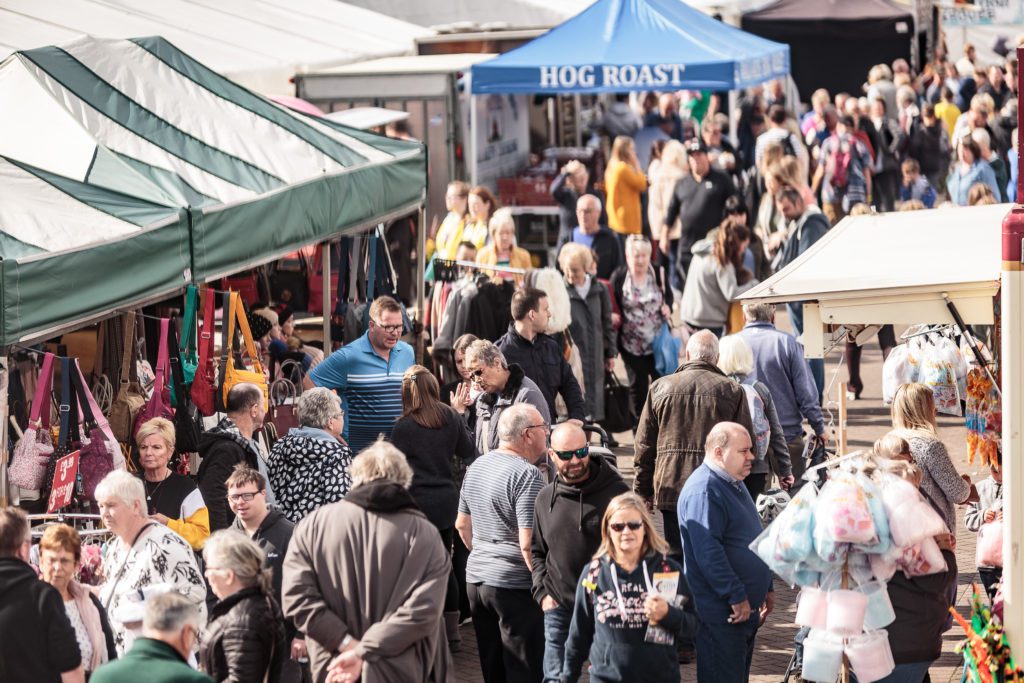
Also this year, celebrity chef and TV presenter Clodagh McKenna will be cooking in the Kitchen Marquee on Saturday and Sunday,
Tickets to Stranraer Oyster Festival costs £5 per day or £10 for the full three-day event for over 16s, with concessions
available. 16s and under can attend free of charge: www.eventbrite.co.uk/o/stranraer-developmenttrust-44398921023
The pandemic meant the entire Loch Ryan Oyster operation stopped as restaurants closed. "It was an absolute disaster in every way."
Tristan said, "It was an incredibly hard and incredibly tough time, we had been hoping for a good winter and suddenly to have it absolutely dashed was totally heart breaking."
Luckily they were still able to sell them online which helped, and by not harvesting it improved numbers with more oysters staying to grow on the seabed.
Tristan is optimistic that sales will return to pre covid levels, he explains that with oyster farming you are always looking to future harvests or waiting for oysters to grow. "It is a huge amount of effort just to get some oysters onto someone's table."
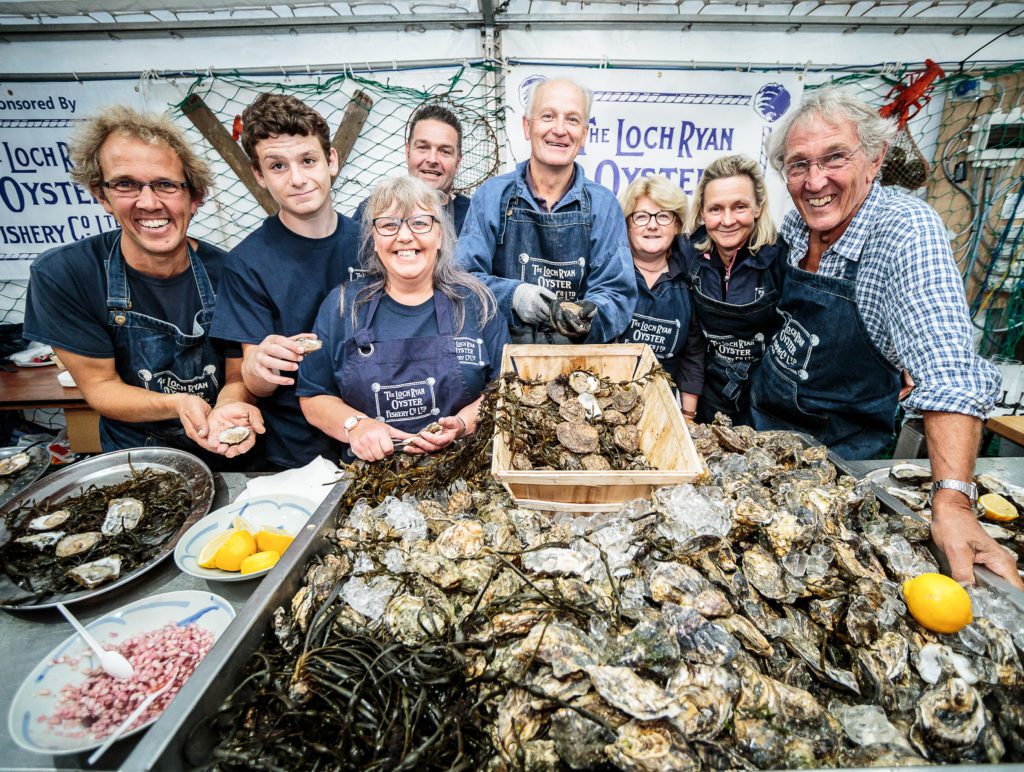
He describes Loch Ryan oysters as tasting like the sea and his favourite way to eat them is; "Just slurping them out of the shell with either a squeeze of lemon or a splash of tabasco."
Tristan has previously won the Scottish Oyster Shucking Championship at the festival. He even dropped the trophy because he was so excited to win, and he went on to represent Scotland at the international oyster opening competition in Galway.
